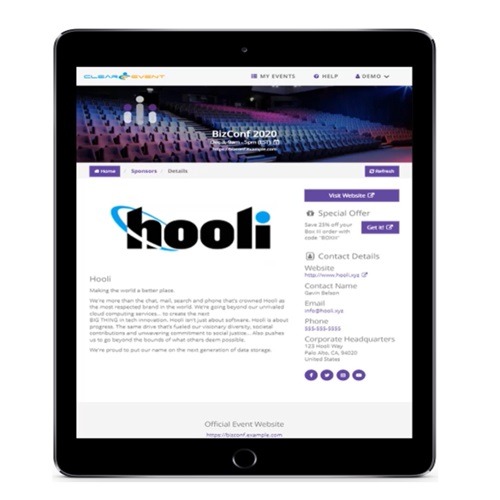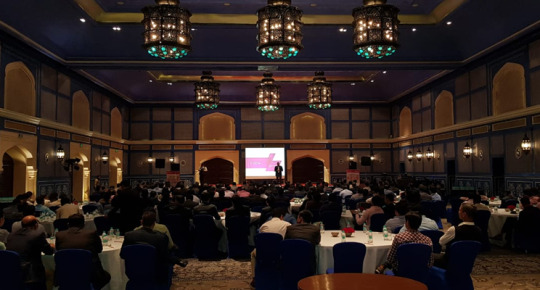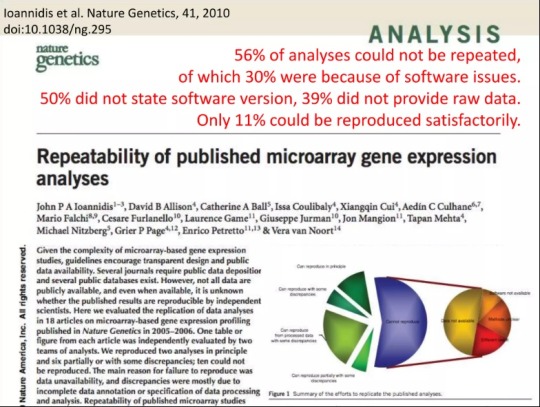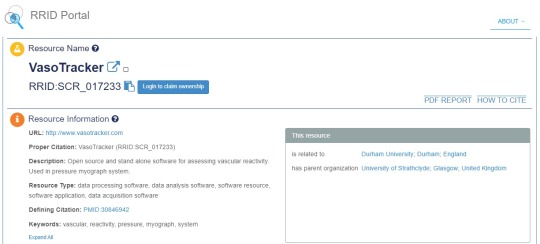#conference and event management software
Text

Promote Sponsors - Clearevent
Promote your event sponsors! Display sponsor logos, banner ads, special offers and contact info to event attendees. Sponsorship is often the financial backbone of an event. Organizing teams can provide additional brand exposure to event sponsors using ClearEvent’s sponsor promotion features. https://clearevent.com/features/sponsors/
#ticket management software#online registration software#event registration app#sell tickets online free#conference and event management software#registration software for events#online event registration software
0 notes
Text
Events and meetings Services | Contact Us today | Tripkartz
Corporate Meetings Planning and Exceptional Meeting Venues | TripKartz
Unlock success with TripKartz’s dedicated corporate meeting planning and outstanding meeting venues. Elevate your events and meetings with our expert solutions.
Meetings — A venue for every occasion
Despite the setting or the number of participants, what makes a meeting successful is the coordination and professional execution. We will apply our experience and sourcing network in India across cities or for any global destination with ease.
We focus on the details to fulfill your objectives
Board meetings
Trainings
Press and Media Meets
Buyer meetings
Review Meets
Recruitment Drives
Incentives — Make Business a delight

Our experts will add elements of fun, reward and surprise
Sales recognition
Client loyalty program
Team Engagement
Performance Reward
Events — Creatively customized
Whether it is an exotic destination or not, our team will ensure that we make the event memorable and unique. We work closely with Domestic and international convention spaces and offbeat venues to ensure that every event is unique , creative and executed successfully.
We emphasis on where it is needed ie your customers and products.
Product launches
Award ceremonies
Cocktail Events
Annual and Festive events
Registered Office
2nd floor, Day Star Building,
10th cross Pampa Ext, Kempapura,
Hebbal, Bangalore — 560024
Karnataka, India
Tel No — +91 9591775553/ +91 9513921785
#business hotels#Keyword#corporate travel management companies in bangalore#travel management companies in bangalore#corporate meetings#Business events#events and meetings#"corporate travel agents#event venues#meeting venues#meetings and events planning#conference management#extended stay hotels#corporate meetings planning#business transportation#corporate events#corporate event management company#corporate travel management#corporate events and meetings#conference management software#corporate transportation#business car rentals#corporate travel agents#corporate hotels#conference venues
0 notes
Text
#events#event management software#eventplanner#conference#current events#event#events 2023#meetings#business meetings#MEETINGS#MALL ACTIVITY#DECORATIVES#DECORATIVE ITEMS#COCKTAILPARTIES
1 note
·
View note
Text
In midtown Manhattan on March 4, Google’s managing director for Israel, Barak Regev, was addressing a conference promoting the Israeli tech industry when a member of the audience stood up in protest. “I am a Google Cloud software engineer, and I refuse to build technology that powers genocide, apartheid, or surveillance,” shouted the protester, wearing an orange t-shirt emblazoned with a white Google logo. “No tech for apartheid!”
The Google worker, a 23-year-old software engineer named Eddie Hatfield, was booed by the audience and quickly bundled out of the room, a video of the event shows. After a pause, Regev addressed the act of protest. “One of the privileges of working in a company which represents democratic values is giving space for different opinions,” he told the crowd.
Three days later, Google fired Hatfield.
Hatfield is part of a growing movement inside Google that is calling on the company to drop Project Nimbus, a $1.2 billion contract with Israel, jointly held with Amazon. The protest group, called No Tech for Apartheid, now has around 40 Google employees closely involved in organizing, according to members, who say there are hundreds more workers sympathetic to their goals.
#yemen#jerusalem#tel aviv#current events#palestine#free palestine#gaza#free gaza#news on gaza#palestine news#news update#war news#war on gaza#google#tech news#pro palestine#anti zionism
3K notes
·
View notes
Text
Failproof tips to improve attendee engagement

Virtual events are great for launching content engagement and learning events. They are less costly and definitely more efficient as event performance can be quantified and tracked. However, to build top-notch engagement at virtual events, enterprises must build digital experiences that present an array of insights about their customers and their learning needs. True interactions brings together micro-communities and hence customer segments
Here are some proven ways to improve attendee engagement at virtual expose
Make them stay longer
Top Virtual Event Platform at Huddlexr create a centralized hub for customer education and engagement. Only showcasing product images and videos cannot build quantifiable engagement. A meaningful engagement at an event would mean providing hand –on product information to the attendees. Offer product brochure with 360 degrees spins and interactive hotspots. It increases content stickiness and hence builds accumulative engagement. Build virtual brand experience canter’s that can excite your customers and spark conversations. Educate and reinforce knowledge with quizzes. Create friendly competitions with leaderboards. Build live market places and incentivize behaviour with giveaways, coupons, and sales promotions.
Personalized event experience
Know the individual learning needs of attendees. Conduct detailed attendee personas based on event data. It also defines your audience and their interest. Knowing your ideal attendee improves targeting and hence event design. Create a personalized attendee event experience by customizing information found on the attendees’ needs rather than speaking in generalities. It increases stickiness and, therefore, more time.
Line up a seamless Pre and post-event engagement
Have a great line of pre-arrival communication; helps people know what to expect and plan for it. Align your social media strategy to echo the content during the event and reinforce it with follow-ups once the event is over. That way, you can maintain engagement with the education message at all times.
Track, analyze, and quantify
Track the fundamental event matrix to understand asset performance. Asset clicks and session views present a clear picture of what all an attendee wishes to do at an event. Data from product interaction at a virtual booth provides valuable insights into the consumer when mapped along with consumer demographics. The data collected from online events can create a massive impact on your future marketing design.
Contact Us
Address: Vijay Complex, 273 B, Office 5, near Prestige Point, Shukrawar Peth, Pune, Maharashtra 411002
Contact No: 078208 03550
#Top Virtual Event Platform#Event Management Software#Online Conference Platform#Virtual Conference Platform#Virtual Community Software
1 note
·
View note
Text
Facilitate Communication With Each Participant
There are several other participants in an academic event, like reviewers and various staff members. You can notify the authors by sending automated messages about the acceptance/rejection of their proposals. The best abstract management system tool lets you send messages to target groups, such as authors from a particular country or the event staff.

#Abstract management software#abstract management system#conference management system#meeting technology#program planner#hybrid event platform
0 notes
Text
During a keynote speech in New York on Monday from the managing director of Google's Israel business, an employee in the company's cloud division protested publicly, proclaiming “I refuse to build technology that powers genocide.”
The Google Cloud engineer was subsequently fired, CNBC has learned[...]
There was more internal controversy this week, also tied to the crisis in Gaza.
Ahead of an International Women's Day Summit in Silicon Valley on Thursday, Google's employee message board was hit with an influx of staffer comments about the company's military contracts with Israel. The online forum, which was going to be used to help inform what questions were asked of executives at the event, was shut down for what a spokesperson described to CNBC as "divisive content that is disruptive to our workplace."[...]
In recent weeks, more than 600 Google workers signed a letter addressed to leadership asking that the company drop its sponsorship of the annual Mind the Tech conference promoting the Israeli tech industry. The event on Monday in New York featured an address from Barak Regev, managing director of Google Israel.
A video of the employee protesting during the speech went viral.
“No cloud for apartheid,” the employee yelled. Members of the crowd booed him as he was escorted by security out of the building.
Regev then told the crowd, “Part of the privilege of working in a company, which represents democratic values is giving the stage for different opinions."
A Google spokesperson said the employee was fired for "interfering with an official company-sponsored event" in an email to CNBC on Thursday. "This behavior is not okay, regardless of the issue, and the employee was terminated for violating our policies." The spokesperson didn't specify which policies were violated.[...]
Ahead of Google's International Women's Day summit on Thursday, called Her Power, Her Voice, some women filled the company's internal discussion forum Dory with questions about how the Israeli military contract and Google's AI chatbot Gemini are impacting Palestinian women. Some of the comments had hundreds of "upvotes" from employees, according to internal correspondence viewed by CNBC.[...]
Another highly-rated comment on the forum asked how the company is recognizing Mai Ubeid, a young woman and former Google software engineer who was reportedly killed in an Israeli airstrike in Gaza along with her family late last year. (Some employees and advocacy groups gathered to honor Ubeid in New York in December.)
One employee asked, "Given the ongoing International War Crimes against Palestinian women, how can we use the 'Her Power, Her Voice' theme to amplify their daily struggles?" The comment received over 100 upvotes.
"It's essential to question how we can truly support the notion of 'Her Power, Her Voice,' while at the same time, ignoring the cries for help from Palestinian women who have been systematically deprived of their fundamental human rights," another said.
As the number of comments swelled, Google prematurely shut down the forum.
8 Mar 24
1K notes
·
View notes
Note
Tips on becoming a freelance portfolio/ investment manager for private wealthy clients.
I’ve got a bit of experience as an assistant Portfolio manager, and I’ve been looking into starting my own business working with private wealthy individuals client.
There's so much to this, this is the shortest I could keep my answer:
Build Your Foundation:
Hone Your Skills: Sharpen your investment analysis, portfolio construction, and risk management knowledge as much as you can. Maybe consider courses or certifications to fill any gaps and boost your credibility more.
Define Your Niche: Are you drawn to specific asset classes (tech stocks, real estate, etc.) or client types (retirees, entrepreneurs)? Specializing adds value. This will boost referrals.
Get Regulatory Clarity: Depending on your location, there might be licensing or registration requirements for freelance advisors. Do your homework to stay compliant and track any changes.
Marketing and Client Acquisition:
Build Online Credibility: A polished LinkedIn profile and a basic website showcasing your expertise and background are essential. Network strategically!
Content is King: Share insightful market commentary through blog posts or a newsletter. You can try all the other social platforms as well. This establishes you as a thought leader and attracts potential clients.
Target the Right Audience: Where do your ideal clients hang out (online and offline)? Charity events, industry conferences, upscale networking groups – be where they are.
Leverage Your Existing Network: Don't underestimate the power of your current contacts. Let clients, colleagues, and friends know about your new venture(optional).
Operational:
Pricing Model: Will you charge hourly, flat fees, or a percentage of assets under management? Consider your services and market rates.
Tech Tools: Invest in the right software for portfolio management, reporting, and client communication to streamline your workflow.
Contracts and Compliance: Have a lawyer draft airtight client agreements that protect you both.
Bonus Tips:
Get a Mentor: Connect with a seasoned advisor who can offer guidance and share their experience.
Start Small and Scale: Begin with a few strategic clients, and as your expertise and reputation grow, expand your clientele.
Embrace the Freelance Mindset: Be prepared for the hustle; managing your own business requires discipline and adaptability.
Remember, building a successful freelance practice takes time, dedication, and top-notch client service. Stay passionate, stay focused, and let your expertise pave the way to becoming a trusted advisor for your wealthy clientele.
16 notes
·
View notes
Text
New documents leaked by a source close to the Putin administration shed light on a previously unknown tool in the Kremlin’s propaganda arsenal: an online program called Clicker Pulse. This software allows the Russian authorities and pro-government media to track which individual messages from the president’s speeches resonate with specific audiences and which ones fall flat. Using this information, the managers of Kremlin-aligned social media pages can then boost or suppress various sound bites from Putin’s addresses and press conferences to align with what regional audiences want to hear. Here’s how it works.
Propagandists from the pro-Kremlin “autonomous nonprofit organization” (ANO) Dialog gather information about the reactions of various segments of the Russian public to specific statements made by Vladimir Putin, according to leaked documents obtained by the Estonian news outlet Delfi and shared with Meduza.
To record viewers’ “spontaneous emotional reactions” to particular moments in Putin’s speeches, according to the documents, Dialog has created an online tool called Clicker Pulse. The program works by asking focus group participants from Russia’s “main social groups” to click “Like” or “Dislike” every five seconds while watching videos of Putin’s speeches. It then aggregates the data, showing Dialog employees the majority reactions of various categories of viewers to each point in the speech.
This, the documents indicate, allows the Russian authorities’ vast network of social media curators to “adjust the audience for the delivery of [Putin’s] messages.” In other words, the Kremlin’s “regional governance centers” (RGCs) — agencies throughout the country that were created at Putin’s request in 2020 to get “feedback” from Russians online — can decide in real time which messages from Putin’s speeches to promote and which ones to suppress on regional pro-government social media pages and Telegram channels.
The focus group participants’ reactions are also sent immediately to senior members of the Putin administration, though it’s unclear from the leaked documents what the president’s team does with this information.
Additionally, Meduza has obtained a report that describes in detail the reactions of focus group participants to a press conference held by Putin in December 2021. Viewers’ “overall impression” of the event was “mixed,” according to the report’s authors; for example, most of them reacted negatively to Putin’s answer to a question about Russia’s restrictions on “foreign agents.” In his statement, the president claimed that the “beacon of democracy, the U.S.,” has a law similar to Russia’s repressive “foreign agents” law and that Moscow’s version is “much more liberal” than Washington’s. (This is not the case.)
The focus group also had a negative reaction to Putin’s answer to a question about the use of torture in Russian prisons. Asked how the authorities planned to combat the practice and whether Putin would personally oversee these efforts, Putin said that torture in prisons is a “worldwide problem” and that “there are many places in Europe — say, in France — and in the U.S., the kinds of places that no longer exist even in third world countries.”
Meanwhile, viewers had positive reactions to Putin’s statements that “Ukraine was created by Lenin” and that the U.S. “came to our home with its missiles,” two claims that Putin would use to justify the full-scale war against Ukraine just months later.
Overall, respondents criticized the press conference for featuring “amorphous questions that received amorphous answers,” calling the event “pretty boring,” “predictable,” and “banal.”
A regional official who has heard the Russian authorities discuss their use of focus groups and Clicker Pulse told the authors of this story that the program was the “initiative” of Dialog ANO (whose head, Vladimir Tabak, did not respond to questions about Clicker Pulse). At the same time, the source said he’s confident that if focus group participants begin “criticizing the president too much,” these methods will quickly be discontinued.
7 notes
·
View notes
Text
Back to School: Interview with Virginia Pratt, Young Writers Program Educator

NaNoWriMo’s Young Writers Program helps over 85,000 kids, teens, teachers, and families set creative goals and tell stories they care about. We asked some of our amazing YWP educators to share how they take on the NaNoWriMo challenge in their classroom. Today’s advice comes from Virginia Pratt, who has been an educator for over 35 years.
Q: What grade/ age level do you work with? What type of NaNoWriMo group is it (whole class, club, homeschool, elective, etc.)?
A: I teach 4th/5th Grade gifted/talented ELA.
Q: How long have you been doing NaNoWriMo with your students?
A: 4 years (this will be year 5)
Q: How do you structure the entire project (for example, do you start prepping in October and write in November, do you have kids work on it all year, etc.)?
A: I use the month of October to prep. We do a reading/writing workshop, and I find that the materials are great for helping me work with the students on understanding literary elements as we read in October and prepare for the writing in November. As students are working on crafting their own characters, we are studying the arc of character in reading—seeing how different events impact them, how they change over time, what conflicts they face, etc. We do this with setting, with plot arc, etc.
Q: What does a normal NaNoWriMo day look like for your students?
A: In November, once we are writing the stories, kids have their independent writing time to work on their stories. I read their work and confer with them, and they also have writing partners with whom they meet during the week. As they encounter struggle—dialogue, for example—we have mini-lessons on those things and then students continue to move forward. While they only have 20 - 30 minutes of writing time during the day, many kids opt to write at night and in other "choice times".
Q: How do you set and manage word-count goals?
A: I give the kids an example of what different word counts look like, once typed. I tell them the length of some texts they are all familiar with. I tell them my work count, and explain that I write/type much more quickly than they do. When they make their goal, I let that stand unless they come to me later and say they want to change their goal. Changing a goal (either increasing or decreasing) is not ever an issue.
Q: How do you manage grading? Do you grade?
A: Grades come from what I see them doing as a result of our entire process. I take grades on their reading comprehension and understanding of literary elements, figurative language, etc. All of those things are positively impacted by their work actually manipulating them in their own writing. I do give a grade based on effort and growth, and the students have a rubric/checklist of things I am looking for in their writing. They all get good grades because they are working with me in conferences and they are motivated to participate.
Q: How do you approach revision/ publishing (if at all)?
A: We do some revision work—as kids bring up areas that are causing them difficulty - during November, but we save most of that work for the month of January and the "Now What?" phase.
Q: Any NaNoWriMo tips or tricks to share with other educators? Hard-won lessons? Ah-ha moments?
A: I think it is really important to be accepting of what the kids want to try to do. The way the program materials are set up, if a child tries to write a piece with little to no substance, it's easy for me to go back to the workbook and say, "Okay, but why is your character doing this?" "What made him/her act this way?" "What conflict is impacting your character? " They realize pretty quickly that they are missing a lot of key information that they NEED to make a good story.
If a kid wants to do a comic book or graphic novel, I find a way to let them do that. We use storyboards or software that helps them put that together, and then handle the word count manually.
My focus is on getting them excited to write, and having them actually do writing. We can polish and improve the work later, but just getting them to tell a story and take the risk to put it out there is the most important part.
Q: Have you ever run into resistance from your administration about doing NaNoWriMo, and if so, how did you manage it? What do you say to people who don’t see the point of having students write novels?
A: I haven't had any issues. Generally if anyone does question what we are doing, they stop questioning when they see how engaged the kids are.
Q: What are the most meaningful things you or your students take away from the project? What's your best NaNoWriMo memory?
A: The best part for us is that there is a true sense of being part of a greater community of writers who are all struggling/working together to get closer to a dream of being a published writer. We watch some of the videos NaNoWriMo posts that are appropriate for 10-11 year-olds, and we've also used some video tape of some of the write-ins where a topic is given for everyone to write on for 10 minutes. If I select those carefully, they really open the kids up to a different way of thinking about their writing. The best memories are around those kids who are so proud of how much they've written, or if they've met their goal.
Q: Anything else you'd like to add?
A: For me, the whole thing is about feeling and acting like a writer. The kids don't know it's possible until we let them try. Some surprise themselves AND me with what they can do. Even those who don't start off thinking of themselves as writers come out understanding more about the process and seeing where some of their strengths lie. It gives them something to build on as they move on through school and are asked to write. It's important that NaNoWriMo represents a measure of success for every kid. That works wonders in helping them to take further steps as writers.
Virginia Pratt has been an educator for 35 years, and currently works with 4th and 5th grade students. An avid reader and notebooker, Dr. Pratt loves bringing an appreciation of story to her students and strives to help them to feel like successful readers and writers every day. Dr. Pratt loves music, roller coasters, and naps and enjoys spending time with her family and friends and traveling.
8 notes
·
View notes
Text
Intacct Advantage 2014 keynote — VoicePlay live performance
youtube
Since most specialized industry events aren't open to the general public, it's unusual for their activities to be recorded and posted publicly. Fortunately for us, a financial management software company did just that at their annual customer and partner conference. The camera was clearly set up to capture more static presentations, but the sound quality is good.
Details:
title: Advantage 2014 Keynote: VoicePlay performance
original songs / performers: [0:52] "Don't Stop Me Now" by Queen; [3:45] "Be Our Guest" from Disney's Beauty and the Beast (1994); [4:20] "You Can't Hurry Love" by The Supremes; [4:55] "Bust A Move" by Young MC; [5:38] "Stayin' Alive" by The BeeGees
written by: "Don't Stop Me Now" by Freddie Mercury; "Be Our Guest" by Howard Ashman & Alan Menken; "You Can't Hurry Love" by Lamont Dozier, Brian Holland, & Eddie Holland; "Bust A Move" by Marvin "Young MC" Young, Matt Dike, & Michael Ross; "Stayin' Alive" by Barry, Robin, & Maurice Gibb
arranged by: VoicePlay
performance date: 11 November 2014
My favorite bits:
starting with the ruse of being the sound techs
♫ "CHEEEEECK" ♫ ::happy little bow::
the whole pantomime of Eli and Tony apologetically trying to herd Earl off stage, then giving in, Layne and Geoff starting to cut them off, then finally dropping the bit entirely
enhancing their crescendos through mic movements
Geoff bopping along to his bouncy bass line in "Be Our Guest"
Eli's counterpoint moments in "Bust A Move"
Tony busting out a lowkey Hustle during "Stayin' Alive"
that final breakdown section

Trivia:
"Be Our Guest" is one of the earliest music videos available on VoicePlay's YouTube channel.
They later included "Bust A Move" in their "Aca Top 10 — Old School Rap" countdown video.
A fully produced version of "Stayin' Alive" appeared on 4:2:Five's 2004 album "Unstoppable", and won a 2005 CARA for Best Contemporary Pop/Rock Cover in the professional division.
After kicking off this conference in the morning, the guys packed up and made their way to an afternoon soundcheck for a second corporate gig in the evening.

5 notes
·
View notes
Text
Online Earning !!
Making money online involves a wide range of opportunities and business models. Here are some popular methods to earn money online:
Freelancing: Offer your skills and services on freelancing platforms like Upwork, Fiverr, or Freelancer. Common freelance jobs include writing, graphic design, web development, virtual assistance, and social media management.
Online Surveys and Market Research: Participate in online surveys and market research studies on platforms like Survey Junkie, Swagbucks, or Vindale Research. You earn money or rewards for sharing your opinions.
Content Creation: Start a blog, YouTube channel, or podcast around a niche you're passionate about. Once you build a substantial audience, you can monetize through ads, sponsorships, affiliate marketing, or selling digital products.
Dropshipping: Create an online store and partner with suppliers to sell products without holding inventory. When customers make purchases, the supplier ships the products directly to them, and you earn a profit.
Affiliate Marketing: Promote other people's products or services through unique affiliate links. When someone makes a purchase using your link, you earn a commission.
Online Courses and Ebooks: If you have expertise in a particular field, create and sell online courses or ebooks on platforms like Udemy, Teachable, or Amazon Kindle Direct Publishing.
Stock Photography and Videos: If you are skilled in photography or videography, you can sell your work on stock platforms like Shutterstock, Adobe Stock, or Getty Images.
App Development: If you have programming skills, create mobile apps or software and generate revenue through app purchases, in-app ads, or subscriptions.
Virtual Events and Webinars: Host online workshops, webinars, or virtual conferences and charge attendees for access.
Remote Work: Look for remote job opportunities in various fields like customer service, data entry, content writing, software development, etc., on job portals like Remote.co or FlexJobs.
It's important to note that making money online requires dedication, effort, and sometimes patience. Beware of scams or get-rich-quick schemes, as they are usually not legitimate ways to earn money. Do thorough research and focus on building a sustainable online presence in your chosen field.
5 notes
·
View notes
Text
Contact Us| Conference Management and Corporate Event Transportation TripKartz
Elevate Corporate Transportation with TripKartz — Where Business Meets Comfort!
Navigate the world of corporate travel seamlessly with TripKartz’s top-tier transportation services. Experience unparalleled efficiency and luxury for your business journeys. 🌟👔

🌟 Key Services:
Executive Transfers: Travel in style with our fleet of executive cars for seamless airport transfers and corporate commuting.
Group Travel Solutions: From team-building outings to corporate events, our luxury coaches are designed for group comfort and convenience.
Event Logistics: Trust TripKartz to manage transportation logistics for corporate events, ensuring smooth coordination and timely arrivals.
Customized Packages: Tailored transportation solutions to align with the unique needs of your corporate agenda.
🔗 Learn more about our Corporate Transportation Services: TripKartz — Contact Us
✨ Why Choose TripKartz for Corporate Transportation? Experience the epitome of corporate travel excellence with TripKartz. Our commitment to reliability, efficiency, and client satisfaction sets us apart as your preferred business travel partner.
🚀 Connect with Us:
Website: TripKartz Corporate
Contact: Corporate Transportation Inquiry
Social: LinkedIn | Twitter
🌈 Let TripKartz be your driving force in corporate transportation. Elevate your business travels with comfort, style, and efficiency! 🌐🏢 #CorporateTransportation #BusinessTravel #TripKartzCorporate #BangaloreBusinessJourneys
Connect with TripKartz for cutting-edge conference management and seamless corporate transportation solutions. Elevate your events with our expertise. Contact us.
#business hotels#Keyword#corporate travel management companies in bangalore#travel management companies in bangalore#corporate meetings#Business events#events and meetings#"corporate travel agents#event venues#meeting venues#meetings and events planning#conference management#extended stay hotels#corporate meetings planning#business transportation#corporate events#corporate event management company#corporate travel management#corporate events and meetings#conference management software#corporate transportation#business car rentals#corporate travel agents#corporate hotels#conference venues
0 notes
Text
Remote Work Revolution: Job Vacancies in the Virtual Office
The way we work has undergone a seismic shift in recent years, and it's not just a passing trend. The Remote Work Revolution is here to stay, and it's transforming the job market as we know it. In this blog post, we'll explore the opportunities presented by this revolution and the myriad job vacancies that have emerged in the realm of the virtual office.

1. Remote Project Manager
Project management remains a vital function, even in a virtual office setting. Remote project managers oversee teams, set goals, and ensure that projects are completed efficiently and on time.
2. Virtual Administrative Assistant
Administrative assistants continue to play a crucial role in remote work. They manage calendars, coordinate meetings, and handle a wide range of administrative tasks that keep virtual offices running smoothly.
3. Digital Marketing Specialist
In a world where online presence is everything, digital marketing specialists are in high demand. They create and execute online marketing strategies, optimizing a company's visibility and reach in the digital landscape.
4. Software Developer
Remote software developers design, build, and maintain the software that powers the virtual office. They collaborate with global teams to develop applications, websites, and other digital solutions.
5. Customer Support Representative
The need for excellent customer support remains unchanged. Remote customer support representatives address customer inquiries and issues via email, chat, or phone, providing top-notch service from anywhere in the world.
6. Virtual Sales Representative
Sales teams have adapted to remote work, and virtual sales representatives connect with clients and prospects through virtual meetings and online communication channels.
7. Data Analyst
Data analysts gather and interpret data to provide insights that guide business decisions. Their work helps companies make data-driven choices, leading to improved efficiency and profitability.
8. Telemedicine Practitioner
The healthcare industry has embraced telemedicine, leading to job vacancies for remote doctors, nurses, therapists, and other healthcare professionals who provide medical consultations and care remotely.
9. Online Education Instructor
Online education has witnessed exponential growth, creating opportunities for online instructors who conduct virtual classes and offer remote support to students worldwide.
10. Content Creator
Content creators generate written, visual, or audio content for websites, blogs, social media, and other digital platforms. They play a critical role in engaging and informing virtual audiences.
11. Human Resources Manager
HR managers are responsible for recruiting, onboarding, and managing remote employees, ensuring a smooth and positive experience for all.
12. Cybersecurity Specialist
With the increased reliance on digital technologies, cybersecurity specialists are in high demand to protect company data and systems from cyber threats.
13. Virtual Event Planner
Virtual event planners design and coordinate virtual conferences, webinars, and other online gatherings, ensuring a seamless and engaging experience for attendees.
14. Remote Financial Analyst
Financial analysts analyze financial data to provide insights that drive business decisions, even from remote locations.
15. Online Psychologist or Counselor
Remote psychologists and counselors provide mental health support to clients through virtual sessions, expanding access to mental health services.
The Remote Work Revolution has unlocked a world of possibilities, allowing individuals to pursue meaningful careers while maintaining flexibility and work-life balance. The virtual office is no longer just a temporary solution; it's a fundamental shift in how we work, and it's opening up a wealth of job vacancies for those ready to embrace this new way of working. As remote work continues to evolve, these job vacancies will continue to adapt and expand, creating exciting opportunities for job seekers in the virtual office of the future.
#employee engagement#hr analytics and reporting#hrsoftware#hr operation#hr services#hr solutions#onboarding
2 notes
·
View notes
Text
A list of upcoming software testing conferences, software quality assurance and DevOps events taking place in 2023 all over the world (USA, Canada, Europe, UK, Germany, France, Netherlands, India, China, Australia, etc.). These conferences discuss software quality assurance, test automation, open source testing tools, agile testing, Selenium, Appium, Cypress, PlayWright, JMeter, Postman, mobile testing, web testing, load testing, DevOps, continuous delivery or test management.
3 notes
·
View notes
Text
Some thoughts on institutional research software management and persistent identification
Pablo de Castro, Open Access Advocacy Librarian at U Strathclyde
(with thanks to Alan Morrison, Research Data Management Officer, for the explanation on institutional workflows around research software at Strathclyde Uni)
See also this previous StrathOA blog post by Alan Morrison "Depositing, distributing & citing software and code (A Zenodo – GitHub integration)"
A webinar on "DOIs for research software" will be organised by DataCite on Wed May 24th (in two weeks at the time of writing). This forthcoming event provides a good opportunity to share some thoughts on research software and the attempts to persistently identify it. These thoughts address the way institutions may or may not be specifically supporting research software management, with some specific considerations on persistent identifiers thrown on top. These latter thoughts are driven by one of the questions immediately raised by the event title: why is it called "DOIs for software" instead of "persistent identifiers for software"?
a. On research software management and its support from institutions
1. Research software is a key part of the gradually-developing European Open Science Cloud (EOSC). Moreover, research software is also a critical element when discussing research reproducibility

Slide from presentation “Software – a different kind of research object?” delivered by Neil Chue-Hong (Software Sustainability Institute) within the U Lancaster 3rd Data Conversation linked below (click on the image to access the full deck of slides)
2. While data repositories have also been collecting software for quite some time, this tends to be a researcher-led task. Proactive institutions are definitely able to support their academics for this specific purpose, usually within a wider conversation on Research Data Management – see for instance this inspiring 3rd Data Conversation "Software as data" held by colleagues at Lancaster University on Oct 3rd, 2017.
3. It's not that frequent however for institutions to independently address research software management as a separate area with its specific workflows and resources, but rather as part of the RDM-related work. RDM policies are quite widespread – including a recently issued RDMS policy at Strathclyde – but they tend not to include specific sections devoted to research software management.
4. When discussing general worklines like persistent identifiers for research software, the perspective of the institution is very relevant. Members of an institutional Open Research team are arguably best placed to deliver the sort of advice on Open Research implementation that would ensure that research software is always persistently identified. Critically, institutional Open Research teams are able to provide this advice in a discipline-agnostic way. This places them at the forefront of any specific dissemination activity around PIDs, not just for software but for any other entity too (including datasets but also projects or research equipment and facilities).
5. The intersection between persistent identification and institutional advocacy offers Open Research implementation teams a potential way into a more holistic support for the adequate management of the various research outputs produced by research groups, departments and schools.
b. On persistent identifiers for research software (or for any other entity in the area of "emerging PIDs" such as geosamples, conferences or research equipment and facilities)
A prominent research information management workflow modeller made the following remark during a discussion on PIDs at a recent euroCRIS event: "After extensively discussing the issue within the team, we decided not to implement a PID-issuing feature for all sorts of entities in [specific commercial CRIS solution] – which we could easily do from a technical perspective – because we could add to the confusion by enabling a mechanism to inadvertently create duplicate unique persistent identifiers for those entities".
An interesting example for this risk of duplication is provided by the VasoTracker software developed by researchers at the Universities of Strathclyde and Durham within the 'Optical Cannula' Wellcome-funded project, persistent grant ID https://doi.org/10.35802/202924 (among other acknowledged funding sources). As described on the VasoTracker website, this is a collection of open source tools for studying vascular physiology. The motivation for its development is also explained in the homepage:

This VasoTracker software not having been deposited in the system [Pure] that Strathclyde uses as a data repository, it has no DOI. The reasons why it hasn't been deposited probably come down to (i) the frequent misconception by researchers that datasets only apply to supplementary data underpinning publications and (ii) the probable wish to avoid the need to keep what has quickly become a live software package updated in several places at the same time – which may have led to choosing the website (and its associated github repository) as the default 'containers' for the code.
So would Strathclyde researchers developing code and their institutional Open Research support teams learn any new tricks at a webinar on "DOIs for research software"? Presumably yes, even if it were just on how Zenodo can help with the deposit of code, its maintenance and versioning. Plus perhaps DataCite will soon start supporting the issuing of DOIs for research software via Fabrica like it's already doing for geosamples and might one day do for research instruments and facilities.
There is however one interesting aspect regarding this VasoTracker software in line with the remark above on the risk of "inadvertently creating duplicates for unique PIDs". VasoTracker already has a PID. It's a RRID and not a DOI, granted (hence the nuanced title for the DataCite webinar?) but still a persistent identifier. How this RRID: SCR_017233 came to be assigned is not easy to tell. It's highly unlikely that this was a result of the outreach effort from the researchers involved in its development – it looks rather as if it had been automatically identified by some algorithm searching all across the Internet, including all github repositories.

In fact, AI-driven PID cross-linking routines could quite quickly get the PID Graph displayed that we are so painstakingly building these days. The SciCrunch portal that hosts all these RRIDs is in fact able to crawl the references to a specific 'identified entity' (a software package in this case, but also a research instrument or facility or an antibody) in the published research literature (with the caveat that it needs to be available Open Access, otherwise even the super-clever modern algorithm will crash into the old-fashioned profit-driven paywalls).

The SciCrunch identification of the research publications that cite this RRID-tagged piece of software is not perfect, or not yet: the list on the RRID webpage only includes two of the seven references shown on the VasoTracker webpage (as identified by the software creators themselves). The fact that these references appear at all on the very same SciCrunch page where this RRID: SCR_017233 is described is a huge progress anyway and a hint at what we will be able to achieve in the not-so-distant future.
The risks of duplication highlighted by the research information management colleague at the euroCRIS meeting should however be kept in mind during the process of expanding the DOI coverage. While duplication is not necessarily an issue per se, it would make sense for the different PID initiatives to enable some (reasonably simple) mechanism to map duplicate entries to each other.
#research software#research data management#persistent identifiers#PIDs#DataCite#PID graph#VasoTracker
2 notes
·
View notes